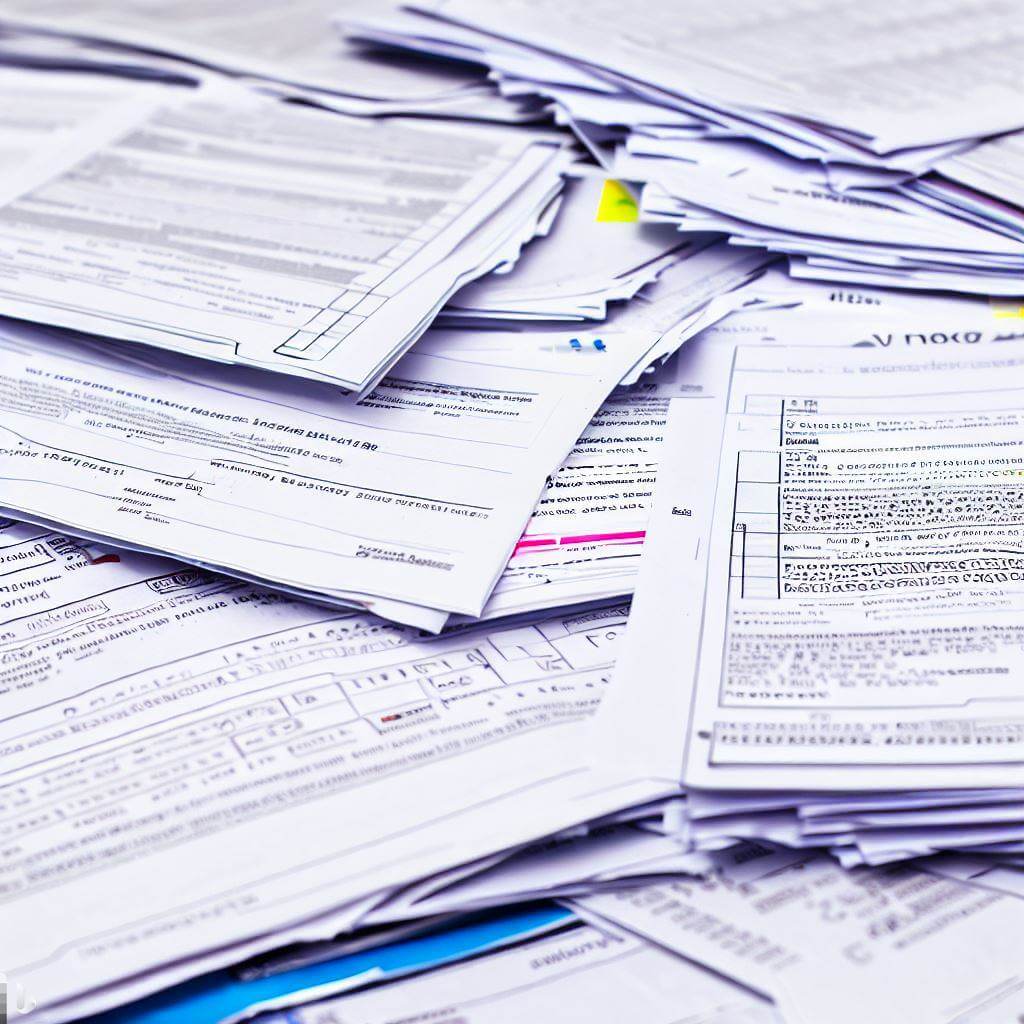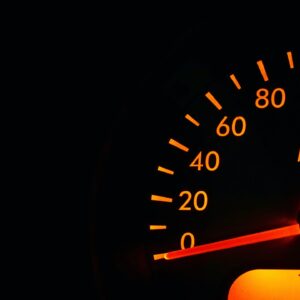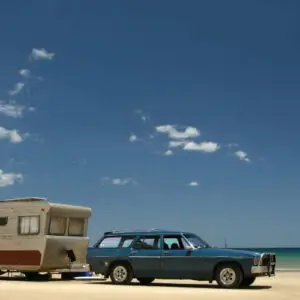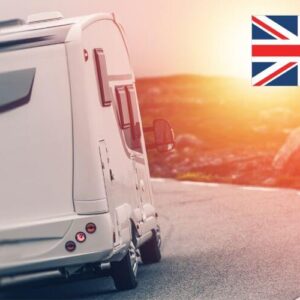Updating a V5 for a van conversion to a motorhome can be a complicated process, but it’s essential to ensure that your vehicle is registered correctly. The DVLA will only consider changing the body type to a motorhome if the body type shown on your V5C registration certificate is currently one of the following: ambulance, box van, goods, or passenger-carrying vehicle. If your vehicle falls under one of these categories, you can apply to have your V5C updated to reflect the new body type.
To update your V5C, you must complete section 7 of the form and carefully enter ‘Motor Caravan’ in the box headed ‘wheelplan/Bodytype’. You must then sign and date the declaration at section 8, but only in the ‘Registered Keepers’ section. Once you have completed the form, you should detach the right-hand section along the perforations and send it to the DVLA. It’s important to note that the DVLA may request additional information or documentation, such as photographs or receipts, to support your application.
In addition to updating your V5C, you may also need to inform your insurance provider of the changes to your vehicle. Converting a van into a motorhome can result in lower insurance premiums, but it’s crucial to ensure that your policy accurately reflects the new body type. You should also be aware that as a motorhome, your vehicle may be subject to different speed limits on single and dual carriageways.
Understanding Van Conversion
Van conversion is a process of converting a panel van into a motor caravan or motorhome. It involves transforming a commercial vehicle into a comfortable living space with all the necessary amenities. Van conversion is a popular choice for people who want to travel and explore the world without sacrificing the comforts of home.
The conversion process can be done in various ways, depending on the preferences and budget of the owner. Some people prefer a simple conversion with basic amenities, while others want a more luxurious setup with all the bells and whistles.
Before starting the conversion process, it is essential to have a conversion checklist to ensure that everything is done correctly and efficiently. The checklist should include all the necessary steps, tools, and materials needed for the conversion.
When converting a van, it is essential to consider the following:
- Space: The van must have enough space to accommodate all the necessary amenities, such as a bed, kitchen, bathroom, and storage.
- Ventilation: Proper ventilation is crucial to ensure that the living space is comfortable and free from moisture and odours.
- Insulation: Good insulation is necessary to keep the van warm in winter and cool in summer.
- Electrical system: The van must have a reliable and safe electrical system to power all the appliances and devices.
- Plumbing: If the van has a bathroom or kitchen, it must have a proper plumbing system to ensure that water is supplied and drained correctly.
Once the conversion is complete, the owner must update the V5 registration document to reflect the changes made to the van. This includes changing the body type from a panel van to a motor caravan or motorhome. The owner must also update the insurance policy to reflect the new body type.
In summary, van conversion is an excellent way to turn a commercial vehicle into a comfortable living space. It is essential to have a conversion checklist and consider all the necessary factors to ensure that the conversion is done correctly and efficiently. After the conversion is complete, updating the V5 registration document and insurance policy is necessary.
Legal and Insurance Implications
Converting a van into a motorhome comes with a few legal and insurance implications that van owners must be aware of. Failure to comply with these implications may result in legal consequences, penalties, and even the invalidation of insurance policies. Therefore, it is crucial to understand the legal and insurance implications of converting a van into a motorhome.
Legislative Requirements
The Driver and Vehicle Licensing Agency (DVLA) has specific requirements for converting a van into a motorhome. The converted vehicle must meet the following criteria:
- It must have a minimum of two windows on one side of the living accommodation.
- It must have a fixed bed or a seat that converts into a bed.
- It must have a water container and a sink.
- It must have a cooking facility.
- It must have a storage facility.
- It must have a means of heating.
Once the van conversion meets these criteria, the owner must apply to the DVLA to have the vehicle’s body type changed from ‘van’ to ‘motor caravan.’ The owner must also update the V5C registration certificate (log book) to reflect the new body type.
Insurance Category
After converting a van into a motorhome, the vehicle’s insurance category changes from commercial to private. As such, it is essential to inform the insurance provider of the van conversion and update the insurance policy accordingly. Failure to update the insurance policy may result in the invalidation of the policy, leaving the owner liable for any damages or losses.
Van Insurance
Van owners must also consider the implications of converting a van into a motorhome on their van insurance policy. Most van insurance policies do not cover the vehicle’s contents or modifications made to the van. Therefore, it is essential to inform the insurance provider of the van conversion and update the policy accordingly.
Law Enforcement
Law enforcement agencies may also be interested in the converted van’s legal and insurance status. Converting a van into a motorhome changes the vehicle’s classification, and failure to update the registration certificate and insurance policy may result in penalties or even legal consequences.
MOT
After converting a van into a motorhome, the vehicle must meet the MOT requirements for a motorhome. The MOT test checks the vehicle’s safety, roadworthiness, and exhaust emissions. Failure to pass the MOT test may result in the vehicle being deemed unroadworthy, and the owner may face penalties or legal consequences.
In summary, converting a van into a motorhome comes with several legal and insurance implications that van owners must be aware of. It is crucial to comply with the legislative requirements, update the registration certificate and insurance policy, and ensure the vehicle meets the MOT requirements. Failure to comply with these implications may result in penalties, legal consequences, and the invalidation of insurance policies.
Vehicle Classification and Registration
When converting a van into a motorhome, it is important to understand the vehicle classification and registration process. The classification of the vehicle will determine the type of registration required and the regulations that must be followed.
The body type of the vehicle is a critical factor in the classification process. The DVLA will only consider changing the body type to motor caravan if the body type shown on the V5C registration certificate is currently one of the following: ambulance, box van, goods, light van, livestock carrier, luton van, minibus, MPV, multi-purpose vehicle, specially fitted van, special mobile unit, van with side windows.
To update the V5C registration certificate, the owner must submit an application to the DVLA. The application should include photographs of the vehicle, a detailed description of the conversion work, and evidence of the vehicle’s use as a motorhome.
Once the DVLA has approved the application, the owner will receive a new V5C registration certificate with the updated body type classification. The new certificate will also include the vehicle identification number (VIN) or chassis number, which is a unique identifier for the vehicle.
It is important to note that the registration plates or number plate must also be updated to reflect the new body type classification. Failure to do so could result in fines or legal action.
Registering a converted van as a motorhome has several benefits. Insurance companies often provide better coverage and rates for motorhomes, and the new classification may also allow for faster speeds on single and dual carriageways.
In summary, understanding the vehicle classification and registration process is crucial when converting a van into a motorhome. By following the proper procedures and regulations, owners can ensure that their vehicle is legally registered and properly classified as a motorhome.
Conversion Process Overview
When converting a van into a motorhome, updating the V5 registration certificate is an essential step to ensure that the vehicle is correctly classified and insured. The following paragraphs provide an overview of the conversion process.
Firstly, the van must meet the DVLA’s requirements for a motorhome. This includes having a minimum of sleeping accommodation, a table and seating area, and storage facilities. The sleeping accommodation must be a fixed bed or convertible seating that can be made into a bed. The table and seating area should be an integral part of the living area, and the storage facilities should be suitable for extended travel.
Once the van meets the DVLA’s requirements, the owner must update the V5 registration certificate. This involves changing the body type from ‘van’ to ‘motor caravan.’ The owner must provide a detailed description of the conversion, including the number of seats, sleeping accommodation, and any other relevant information such as windows, graphics, or a high-top roof.
The DVLA may require additional evidence of the conversion, such as photographs or receipts for materials and equipment used. If the van has a separate door to the living area, it must be clearly marked as such. Motor caravan-style graphics can also be added to the exterior to further distinguish the vehicle.
It is important to note that the conversion must be permanent, and the van should not be used for any other purpose than as a motorhome. The V5 registration certificate must be updated before the vehicle can be insured as a motorhome, which can result in lower insurance premiums. Additionally, the updated body type allows for different speed limits on single and dual carriageways.
Finally, it is worth considering adding additional features to the motorhome, such as a pop-top elevating roof or a solar panel. These features can enhance the living experience and increase the value of the vehicle.
Interior Conversion Details
When converting a van into a motorhome, the interior conversion details are crucial to ensure a comfortable and functional living space. The following entities should be considered when updating the V5 for a van conversion to a motorhome.
Internal Features
The internal features of a motorhome should provide a comfortable and functional living space. The van should be insulated to prevent heat loss and keep the interior temperature comfortable. The living accommodation should include a bed, storage facilities, cooking facilities, and appliances.
Bed
The bed is an essential part of the living accommodation in a motorhome. It should be comfortable and provide enough space for the occupants to sleep. The bed can be fixed or convertible, depending on the available space. It is important to ensure that the bed is securely fixed to the van’s frame to prevent movement during travel.
Daylight
Daylight is essential for a comfortable living space. The van should have enough windows to allow natural light to enter the interior. The windows should also provide adequate ventilation to keep the interior fresh.
Cooking Facilities
Cooking facilities are necessary to prepare meals in the motorhome. The van should have a sink, a fridge, and a cooking stove. The cooking stove can be powered by gas or electricity. It is important to ensure that the cooking facilities are securely fixed to prevent movement during travel.
Storage Facilities
Storage facilities are essential to keep the interior of the motorhome organised and clutter-free. The van should have cupboards, shelves, and drawers to store clothes, food, and other items. It is important to ensure that the storage facilities are securely fixed to prevent movement during travel.
Gas Bottle
The gas bottle is used to power the cooking stove and other gas appliances in the motorhome. It is important to ensure that the gas bottle is securely fixed and stored in a well-ventilated area to prevent gas leaks.
Log Book
After completing the interior conversion of the van, it is important to update the log book to reflect the changes made. The log book should include the new body type, which should be “motor caravan.” The log book should also include the updated details of the living accommodation, such as the number of seats, beds, and windows.
In summary, converting a van into a motorhome requires careful consideration of the interior conversion details. The living accommodation should include a comfortable bed, storage facilities, cooking facilities, and appliances. The gas bottle should be securely fixed and stored in a well-ventilated area. Finally, the log book should be updated to reflect the changes made to the van’s body type and living accommodation details.
Exterior Conversion Details
When updating a V5 for a van conversion to motorhome, it is important to include accurate and detailed information about the exterior conversion details. This section will cover the key elements that should be included in the V5C registration certificate to ensure that the converted vehicle meets the DVLA’s requirements.
Firstly, it is important to provide photographic evidence of the converted vehicle, including exterior photos that clearly show the distinguishing features of the motorhome. This can include any external features that have been added or modified as part of the conversion process.
The keeper should also provide information about the safety features of the converted vehicle, including any changes that have been made to the vehicle’s structure or chassis. This can include details about any additional reinforcement that has been added to the vehicle to support the weight of the new motorhome body.
It is also important to provide information about the vehicle’s appearance, including any new paintwork or graphics that have been added to the exterior. This can help to distinguish the converted vehicle from other similar vehicles and make it easier to identify.
If the converted vehicle is classified as a light goods vehicle, it is important to ensure that the V5C registration certificate is updated to reflect this. This can affect the vehicle’s tax class and may have other implications for the owner.
In summary, when updating a V5 for a van conversion to motorhome, it is important to provide accurate and detailed information about the exterior conversion details. This can include photographic evidence, details about safety features, distinguishing features, vehicle appearance, and tax class. By providing this information, the owner can ensure that the converted vehicle is correctly classified and meets all relevant safety and legal requirements.
Documentation and Evidence
When updating a V5 for a van conversion to a motorhome, it is essential to provide the necessary documentation and evidence to the DVLA. Here are some of the documents and evidence that may be required:
- Identification: The DVLA may request proof of identity such as a passport or driving licence to confirm the owner’s identity.
- Photographs: The DVLA requires photographs of the converted vehicle to confirm that the changes meet the required criteria. These photographs should show the exterior and interior of the vehicle, including any elevating roof and cooking facilities.
- Vehicle Details: The V5C registration certificate should be returned to the DVLA for a body type amendment. The DVLA will only consider changing the body type to motor caravan if the body type shown on the V5C registration certificate is currently one of the following: ambulance, box van, goods vehicle, or bus.
- Road Safety: The DVLA may require evidence that the converted vehicle meets road safety regulations. This may include a certificate of compliance from a garage that confirms the vehicle’s safety features, such as seat belts and airbags.
- Receipts: The DVLA may request receipts for any work carried out on the vehicle, such as the installation of a cooking facility or an elevating roof.
- Insurance Purposes: If the converted vehicle is to be used as a camper van, it is essential to update the insurance policy to reflect this. Insurance companies may require evidence of the conversion, such as photographs or receipts.
Providing all the necessary documentation and evidence will ensure a smooth process when updating a V5 for a van conversion to a motorhome.
Post-Conversion Considerations
Once the van has been converted into a motorhome and the V5 has been updated to reflect the new body type, there are a few post-conversion considerations that van owners should be aware of.
Safety
Safety should always be a top priority when driving a motorhome. It is important to ensure that all the safety features, such as seatbelts and airbags, are in good working order. The weight of the motorhome should also be taken into consideration, as it may affect the handling and braking of the vehicle.
National Speed Limit
As a motorhome, the vehicle is subject to the national speed limit. However, it is important to note that the speed limit may be lower for certain types of roads, such as single carriageways. It is the responsibility of the driver to be aware of the speed limits and to drive within them.
Enforcement Agencies
Enforcement agencies, such as the police and the DVSA, may carry out checks on motorhomes to ensure that they are roadworthy and comply with the relevant regulations. It is therefore important to ensure that the motorhome is in good condition and that all the necessary paperwork, such as the V5, is up to date.
Insurance
It is important to ensure that the motorhome is properly insured. Many insurance companies offer specific motorhome insurance policies, which may provide more comprehensive coverage than a standard car insurance policy. It is also worth noting that insurance premiums may be lower for motorhomes that have been professionally converted.
In summary, converting a van into a motorhome can be a great way to enjoy the freedom of the open road. However, it is important to ensure that the motorhome is safe and roadworthy, and that all the necessary paperwork is up to date. By following these post-conversion considerations, van owners can enjoy their motorhome with peace of mind.
Frequently Asked Questions
What are the requirements for registering a van as a motorhome?
To register a van as a motorhome, it must meet certain requirements set out by the DVLA. These include having a fixed bed, a water container, and cooking facilities. The DVLA also requires that the van has a certain amount of headroom and storage space.
How do I reclassify my van as a campervan with the DVLA?
To reclassify a van as a campervan with the DVLA, you must first convert it to meet the DVLA’s requirements for a motorhome. Once the conversion is complete, you must then send your V5C log book to the DVLA for amendment.
What are the benefits of registering my van as a camper?
Registering your van as a camper can have several benefits, including cheaper insurance rates and the ability to travel at faster speeds on single and dual carriageways. It can also make it easier to sell the vehicle in the future.
Can I convert my van to a motorhome?
Yes, you can convert your van to a motorhome. However, it must meet the DVLA’s requirements for a motorhome in order to be registered as one.
Do I need to inform the DVLA if I convert my van to a camper?
Yes, you must inform the DVLA if you convert your van to a camper. You will need to send your V5C log book to the DVLA for amendment.
What are the DVLA requirements for converting a van to a motorhome with windows?
The DVLA does not have specific requirements for windows in a converted van. However, the windows must meet certain safety standards and be installed correctly.



